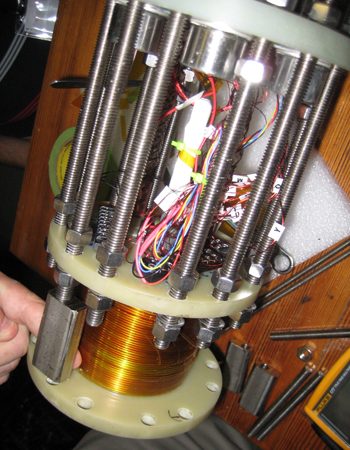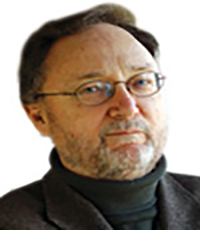
Engineers at the National High Magnetic Field Laboratory are closer than ever to launching a new generation of high-field magnets that have the potential to significantly reduce the lab’s operating costs and open up a new experimental regime for physics research.
In a major sign of progress on that front, the laboratory, in collaboration with industry partner SuperPower Inc., recently set a pair of world records for strength of magnetic fields created by a superconducting magnet. A superconducting magnet requires little to no electricity after it is brought to full field because it is made from a conductor that carries electric current without resistance as long as the magnet receives a steady supply of cryogens such as liquid nitrogen and liquid helium.
The first record was achieved in October 2008 when a 2.8-tesla coil wound from 40 meters (about 131 feet) of a very strong, very high-current-density conductor made from yttrium barium copper oxide, or YBCO, achieved 33.8 tesla when tested in a small-bore 31-tesla magnet at the magnet lab. (Tesla is a measure of magnetic field strength; the Earth’s magnetic field is one twenty-thousandth of a tesla. The bore is the experimental space at the core of the magnet where experiments are conducted.)
The second record was achieved in July 2009 with a larger YBCO coil that uses 15 times as much conducting material. It is the first-ever coil made from any high-temperature superconductor to generate 10.4 tesla on its own. The coil also was able to generate an additional 7.5 tesla when tested in the lab’s 19.9-tesla, large-bore magnet, which is a more realistic test bed. The cumulative magnetic field of 27.4 tesla is the highest value reached in 11 years of testing high-temperature superconductor magnets in the large bore magnet.

The two records taken together show YBCO conductors can be scaled up, carry current and support the stresses of very high magnetic fields.
“We are now confident that this conductor technology can be used to construct an all-superconducting magnet with fields in excess of 30 tesla,” said David Larbalestier, chief materials scientist at the magnet lab. “This is a huge gain over niobium-based superconducting magnets that are only operational to 23.5 tesla.” (Niobium is the material used to build most superconducting magnets.)
While magnets at the magnet lab can achieve fields higher than 30 tesla, they require massive amounts of electricity to do so. The average cost to run a resistive magnet is $774 per hour, while the average cost to operate a 20-tesla superconducting magnet is $18.75 an hour. Naturally, the cost limits the amount of magnet time researchers have to run experiments. But superconducting magnets can run for days and even weeks for just a fraction of the cost, which means more and better data for scientists.
Drew W. Hazelton, principal engineer for HTS applications at SuperPower said, “These new world record achievements are an important indicator of the value provided by SuperPower’s superior performance wire in the area of high field magnetics. We can expect important new developments in magnetics research in the future.”
In just two years, the National High Magnetic Field Laboratory and SuperPower have made great strides in improving the performance of the material for applications that range from electric utility transmission to high-field magnets.
“High-temperature superconductors have shown rapid progress, especially YBCO conductors, and 30 tesla, while challenging, is still far away from any fundamental limit,” said Huub Weijers, who oversees coil testing at the magnet lab. “With continued R&D, even stronger all-superconducting magnets are possible.”
The National High Magnetic Field Laboratory at The Florida State University develops and operates state-of-the-art, high-magnetic-field facilities that faculty and visiting scientists and engineers use for research. The laboratory is sponsored by the National Science Foundation and the state of Florida. SuperPower, a wholly owned subsidiary of Royal Philips Electronics, is a world leader in developing commercially feasible second-generation, high-temperature superconductors and related devices designed to enhance the capacity, reliability and quality of electric power transmission and distribution.




